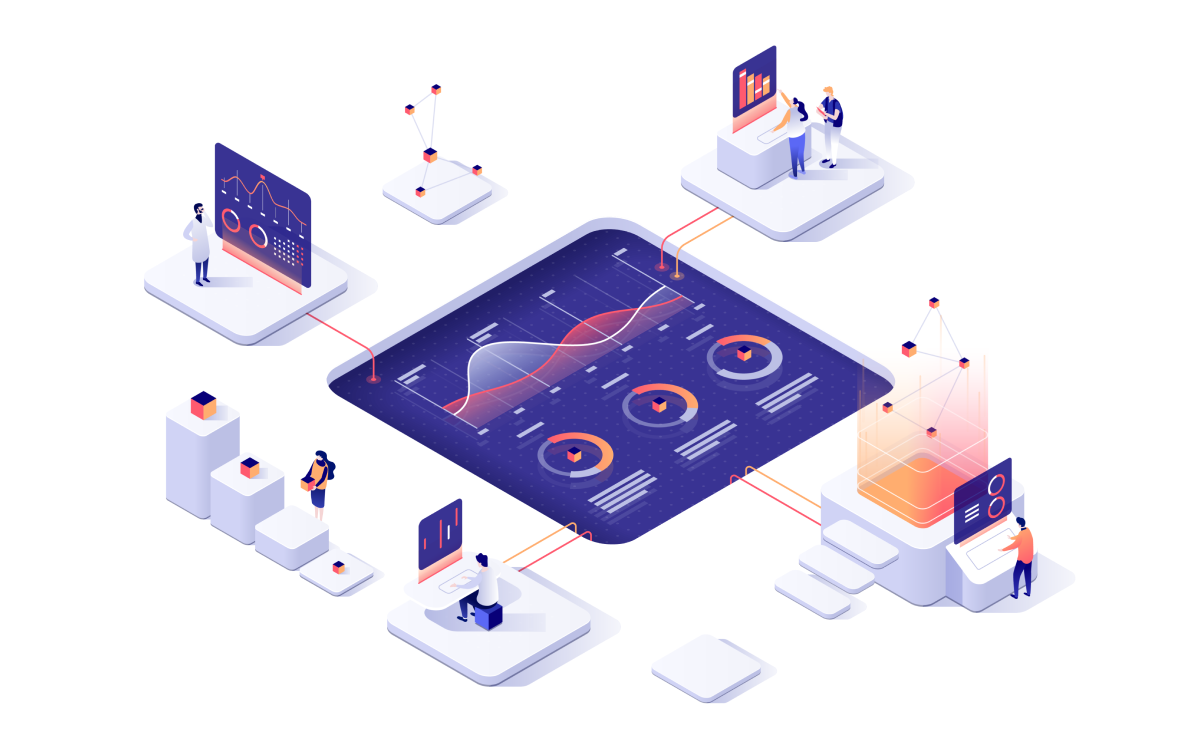It’s safe to say there is infinite raw data circulating in the world. Even if we reduce that figure down to the amount of data that an average business has in possession, we’ll still have an immense amount of data. What good is all that data in all of its forms if it isn’t sorted, labeled, and ready for use? That’s the problem data annotation solves for businesses small and large. Luckily, there is a myriad of options within a hand’s reach for executing efficient data annotation, from acquiring open-source data annotation tools to building your own in-house or outsourcing it entirely. Which one is worth opting for? And most importantly, how do you choose data annotation services that best align with your business needs?
All of that and more will be covered today, including:
- Why businesses need data annotation services
- Build or buy?
- How to choose the right provider
- Key takeaways

Why businesses need data annotation services
It would be a waste to not make use of the myriad of commercial data annotation tools and services that are available in the market now. Even just a few years ago, the options were more limited, and businesses were forced to carry out their efforts in-house for the most part. Why the sudden surge of data annotation tools and outsource vendors? Computer vision and other branches of artificial intelligence are making significant headway in the products and services that companies are offering these days. If AI was something tech pioneers used in their companies a decade ago, today, it has emerged into just about every industry, from agriculture to bioscience and medicine. With the growing demand for AI systems comes the supply to turn blueprints into reality.
Here are the top three benefits you will gain from data annotation services:
Effective organization
Unorganized, raw data isn’t much use to businesses unless you are utilizing it for deep learning where minimum human interference is necessary for the system to operate. In the case of machine learning, the data is of more use to you and the system when it is accurately annotated and only then fed into the machine. Tackling that mountain of information manually is gravely time-consuming to do for anyone, which is where data annotation tools and services assist you in getting the most out of the jumbled data.
Quality assurance
The efficiency of your ML projects relies heavily on the accuracy and quality of the datasets provided in the data training phase. Discrepancies in the trained datasets may lead to skewed output results in later stages of use. A primary cause of such discrepancies is often human error from manual annotation. For that reason, most data annotation tools are embedded with quality assurance mechanisms, or even further, you will be able to acquire a real-life QA team to overview the process when you opt for outsourcing.
Scaling your pipeline
As we’ll discuss in the next segment, when you build your own data annotation tool and carry out all of the processes in-house, there are restraints on how much you can scale your computer vision pipeline. The cost of acquiring additional resources from technological to human alone is one that any company must take into consideration when scaling a project. What about the immense additional data that must be annotated? Also, you may have built your data annotation tool from the ground up but only accounted for one type of annotation — image annotation, for example. You then realize the opportunity to expand to video annotation, but that requires double if not triple efforts to realize, which includes foundational modifications to your existing tool. All of that is costly and time-consuming to do alone. Opting for third-party assistance from a specialized vendor can lift the weight off your shoulders from everything we mentioned above and more.

Build or buy?
Now that we’ve established the value data annotation has for your product or service, it’s time to address the elephant in the room — should you opt for a strictly do-it-yourself data annotation tool or data annotation services from a professional provider? Let’s break down the advantages and disadvantages of both:
- Building your own data annotation tool — The primary reason why companies decide to build in-house with their own resources typically boils down to additional customization and control. When you create your own tool, it is custom-tailored to your workflow, expectations, and preferences, which are qualities that may not be ideally met with third-party commercial providers if your needs are very specific. The downside of doing so is the immense number of resources, including personnel, that are necessary to execute this task in-house, not to mention quality assurance and regular upkeep. With regards to all of that, many find building to be less cost-effective but highly customizable.
- Buying a data annotation tool — Whether you decide to purchase only a tool from a commercial provider or outsource processes as well, this approach has been deemed significantly cost-effective and resourceful for many modern-day business owners. It is impossible to not find a provider among the hundreds to thousands available for cooperation that align with your business needs. Plus, scaling your CV pipeline becomes significantly simpler to do because you save on the time and costs required for expansion by cooperating with a vendor who possesses all of it and is ready to let your business thrive with it.
How to choose the right provider
When entrusting your business’ data annotation to an outsource vendor, you expect to gain results and assistance that meet and even exceed your business needs. How do you choose the best data annotation company as the right fit for you? While over time your needs may change and you will strive for a vendor with services that are more aligned with your business needs, you certainly don’t want to hop from one vendor to another. That’s why it’s crucial to cooperate with a well-suiting outsource vendor by knowing what qualities to look for during your search. Let’s break down some of the ones we believe are the most important to consider when choosing a vendor for your data annotation services.

Security of data
Data is powerful, and in the hands of wrong individuals, it can wreak havoc on your business. The data doesn’t necessarily need to be strictly confidential in nature either. After all, you are entrusting a vendor with a large chunk of your internal processes, and it’s only natural to expect that the data is handled properly. Ask the provider what their typical protocols are in terms of confidentiality and security to determine what they can be held liable for in the aftermath of an unfortunate data breach, for example. However, it’s optimal that the situation doesn’t come to that, which is why it’s vital to screen their security capacity beforehand. One effective way to do so is by understanding what international security regulations they are compliant with, such as ISO 270001 and ISO 9001.
Technology and tools
The best data labeling companies offer execution of processes with state-of-the-art technology and tools, relieving the strain from your in-house team. The data labeling tools in question need to be reliable, efficient, require minimal human intervention, and generally provide features that you don’t currently acquire in-house. The accuracy of the data annotation services that they provide is a large indicator of the quality of the tools that are being used. For that reason, it is best to ask for data samples or a test trial to determine if the quality is up to par with your business needs.
Data types
When we talk about data, we don’t refer to one type of data. After all, there is a variety of data that is involved in processes ranging from text to image, audio, and video data. Annotating specific material from each type requires its own unique approaches and best practices. For text annotation, you will need to ensure they can utilize optical character recognition (OCR) and so on. With that in mind, it’s crucial to determine what types of data are supported by the commercial data annotation tools or outsourcing provider support you with. Additionally, how much reliability does it suggest? Having the capacity to carry out the task isn’t necessarily equal to executing it efficiently. After all, automating your image annotation processes with tools ideally entails minimizing human error and needs to be more effective than executing it yourself.

Key takeaways
Data annotation, or data labeling, aims to tackle a mountain of jumbled data and organize it in a way that can go on to have immense value in machine learning and deep learning systems. A simple labeled image plays its role in building a remote robot that has the ability to detect ripe fruits and pluck them, too, decreasing manual labor in agriculture immensely. With that in mind, all businesses that work with, or plan to implement, AI in their processes need dedicated data annotation tools and services to make it possible. You have the choice of building your own customized data annotation tool in-house or working with a specialized vendor in the field who can not only provide the software but oversee the processes, scaling your project outside the capabilities of what you can do in-house. Opting for data annotation services and tools is not a matter of “if'' but rather “when,” “what,” and “how.” After carefully considering whether the technology and data annotation tools, supported data types, and data security provided by the outsourcing provider aligns with your business needs, you will gain many benefits including, but not limited to, scaling your pipeline, high-quality results, and effective organization.









